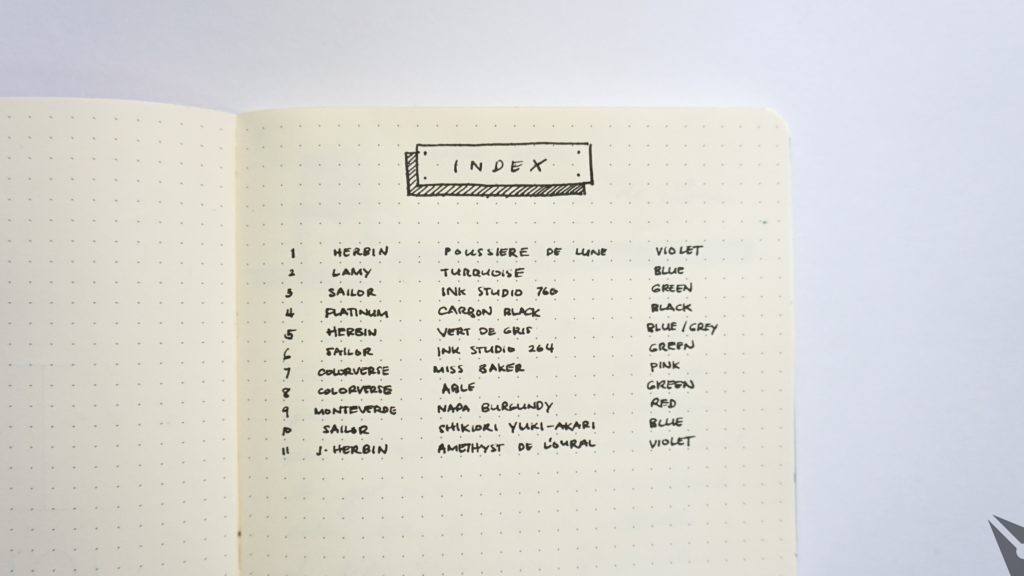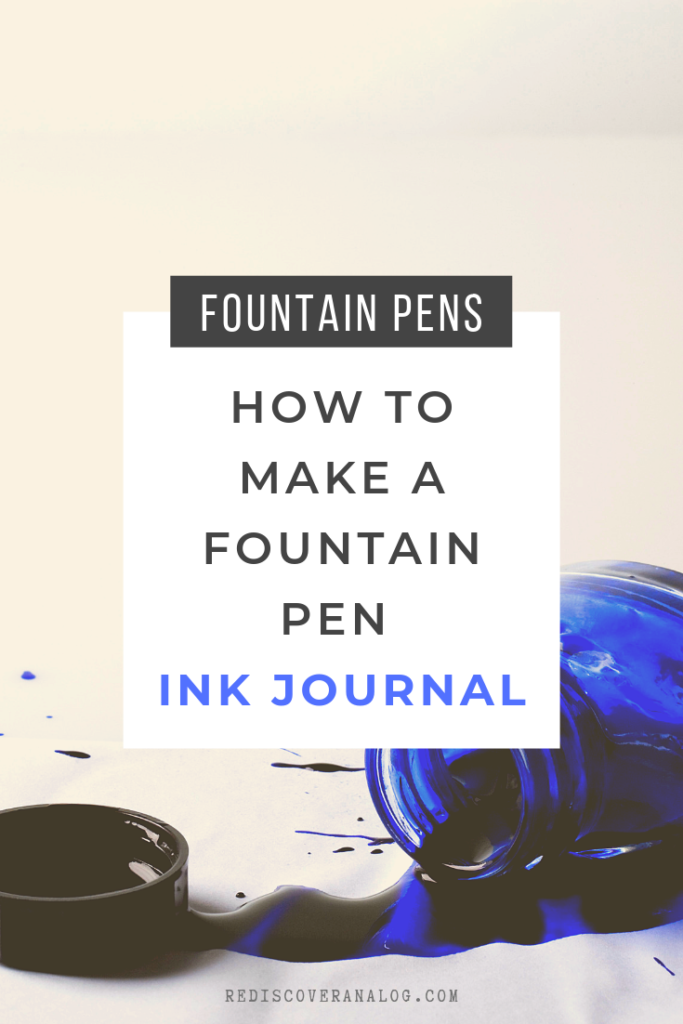When I started in the fountain pen hobby, I never thought that I would end up with more fountain pens, inks, and paper than what I had set out to collect. I’ve always found ways to use my fountain pens (and inks and paper). I use it for bullet journaling, handwriting practice, and daily journaling. And lately, I started a new journal dedicated to my growing fountain pen ink collection.

Disclosure: Some of the links below are affiliate links. This means if you use the link(s) to purchase the item(s) below, I will receive commission for advertising on my site (at no additional cost to you!).
Why Start a Fountain Pen Ink Journal?
- If you’re already a fountain pen ink collector, this might be the best motivation for you to use those inks.
- You get to test the inks – see ink properties how much you like it
- An ink journal would also be a great on-hand reference that you could use in the future.
- It’s fun!

I started mine because I had a spare notebook at home You can tell from the torn pages that I’ve used this before
Now that we’ve tackled the why… let me show you how to start one.
1. Define the purpose of your fountain pen ink journal
I put a lot of thought into what exactly I should write in my ink journal. When I was coming up with ideas, I already knew that I didn’t want a fountain pen ink review format. I personally don’t find it necessary for personal use. I then decided that my ink journal would be a documentation of my connection and experience with each fountain pen ink. Basically, a diary of my fountain pen inks (when I bought it, why I bought it, what I thought about it).
I think that this step is crucial because you want to make a journal that is made for you. You need to have your own purpose so that you will be motivated to update your journal when you can. So think about what your goal is and what do you want to see in your ink journal.
If you can’t think of any, you can use this template called “user story” (which is what we use in software development to define a feature):
As a <describe yourself as a fountain pen person>, I want <some goal> so that <benefit/value>.
For me it was, “As a person who loves playing with inks, I want to create pages of ink splatters and ink swabs so that I will have a beautiful catalog of my ink collection.”
The purpose and goal of your ink journal might change as you go along but this would be a great way to start.
2. Choose your notebook. Fountain pen friendly paper is highly recommended.
The best way to showcase the unique properties of the ink is through fountain pen friendly paper. I personally recommend using a white 68gsm Tomoe River paper notebook. I feel that the white paper would represent the ink’s color best and the thicker Tomoe River paper would be handle pools of ink (ink swabs and ink splatters).
I have 2 versions of my ink journal. The first one was on a Rhodia sewn-spine notebook which, unfortunately, didn’t show off the sheening properties of most of the inks I owned.
When I tried the Midori MD Light, I immediately migrated my ink journal out of the Rhodia. The Midori’s paper quality was way better and brings out the best properties in an ink.


You can also try Ink Journal’s Notebook which already has a template for you to fill out.
3. Use an Index (or Table of Contents)
I’m taking a page from Ryder Carroll’s Bullet Journal system here. An index is basically the table of contents of your journal. This is quite important as it will serve as your reference in the future.
I have an index / table of contents which contains the page number, brand, ink name, main color group. You can simplify this of course. One of the best practices when it comes to indexing is that after you’ve completed a page, you go back to the index and write down the details. This practice ensures that the index is always updated.

Tip: If you already have an ink testing book like the Well Appointed Desk’s Col-o-ring, then you can just write down the page number from the ink journal on the corresponding Col-o-ring card.
4. Start Your Ink Journal
Being the diligent bullet journalist that I am, I have kept track of when I’ve purchased my fountain pen gear. I was able to arrange them easily in chronological order (by date purchased). The main reason for starting it this way is to set a tone of what I wanted in my ink journal – which is to write about the ink after I had purchased it.
My process is that I swab on the sides of the page (so that when I could easily see it when I flip the page. I add an ink splatter to show off the ink’s properties (shade, sheen, shimmer) and then write about what I think about the ink.



Find your style! If you’re creative, you can turn your ink journal into a sketchbook.
Or maybe you can just keep it simple.
5. Buy more ink samples!
I’m kidding! But also, I am not. If you have access to more ink samples, go ahead and try creating volumes of ink journals. To keep things interesting, you can always use the #30Inks30Days challenge to motivate you too.
Here’s a flipthrough of the first version of my Fountain Pen Ink Journal. Watch the video below.

Amazon Disclosure
Rediscover Analog is a participant in the Amazon Services LLC Associates Program, an affiliate advertising program designed to provide a means for sites to earn advertising fees by advertising and linking to Amazon.com








